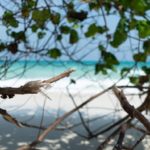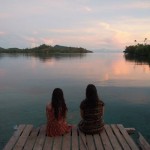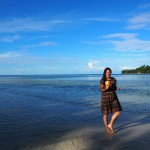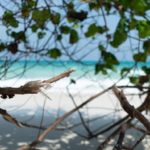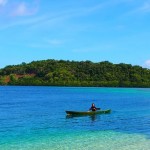Witnessing Turtle Conservation Efforts in the Arnavon Islands
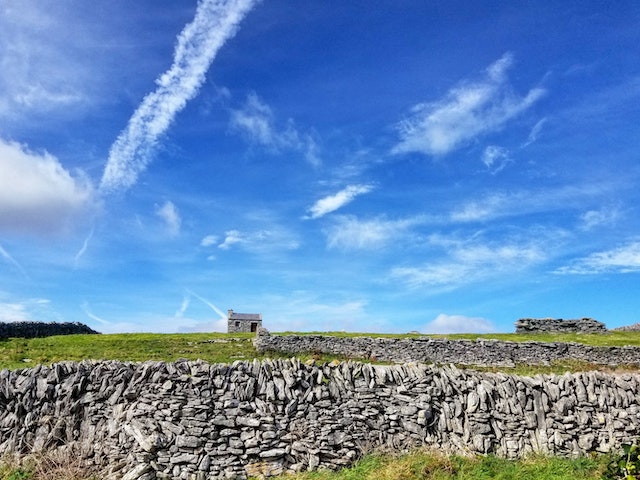
 We arrived at the airport in Honiara and scanned the tarmac looking for our plane.
We arrived at the airport in Honiara and scanned the tarmac looking for our plane.
We knew it was a small plane that would be taking us to Isabel Province, but we couldn’t figure out how small was small. Our flight was called and as we made our way across the tarmac in the early morning light, the airport staff led us to the smallest plane on the runway.
My four friends and I broke out into big smiles in the dawn light. It was the perfect start to our adventure to the remote Arnavon Islands to witness the Hawksbill Turtle conservation efforts.
“Can I sit next to you up front?” I asked the pilot.
“Sure thing,” he said.
Excellent. I was co-piloting a six-seater plane flying to a remote island in the Pacific.
Our flight was called and as we made our way across the tarmac in the early morning light, the airport staff led us to the smallest plane on the runway.
After an hour-long flight over calm blue waters, we landed in the airport, which was just a strip of grass that they mow when a plane is coming in to land.
There is a wooden hut and a wooden sign saying, “Welcome to Suavanoa Airport’ and nothing else.
The local conservation officers from the Arnavon Marine Conservation Area met us and took us on a three-hour boat ride to the islands.
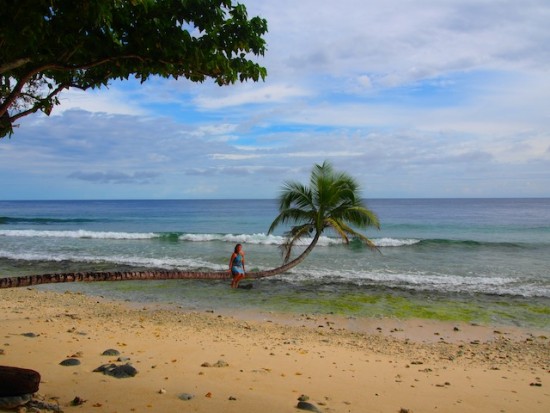
The weather was perfect and Isabel Province is so sparsely inhabited that during the entire journey, we only saw one of two houses and one guy in a dugout canoe. The water was like glass and we could see down to the reef below, and we were cruising along next to volcanic islands rising steeply up from the water covered in clinging vines and jungle.
After crossing the open ocean, which was a little bit of a rough journey, and picking up another conservation officer at a nearby village, we arrived at the Arnavon Islands. A small island with four wooden huts made up the conservation area and not only were we lucky enough to be staying here for a few days, but we also were going to be able to witness conservation efforts that protect the Hawksbill Turtles.
There are three community groups who claim the islands are their traditional land: one from Isabel Province, one from Choisel Province, that is close by, and one community of Micronesians from the Gilbertese, who were resettled there during the 1960s.
During the initial governmental attempts to protect the Hawksbill Turtle from extinction, officials didn’t do any consultation with the communities and just made a blanket ban on turtle hunting in the area. The communities were not impressed, and, after government buildings were burnt down in protest, the officials realized that they needed to take a different approach.
We really are in the middle of nowhere, Robinson Crusoe style. And it could not be more perfect.
After holding community consultation, all three communities agreed to establish a protected area for this turtle and to stop hunting it (during a big feast or celebration they will kill as many as 30 turtles to eat). Now one conservation officer from each of the three communities comes to the island to work on the project each month. They all do one month on, one month off.
We arrived on the land over day. Looking out from the islands weather coast there is nothing but the open ocean and two smaller islands to our right that can be seen.
We really are in the middle of nowhere, Robinson Crusoe style. And it could not be more perfect. We went snorkeling to some of the best reefs I have ever been to with the most abundant hard and soft corals and fish.
We then went on the “turtle rodeo” with the conservation officers. The female turtles when they come up to nest and lay their eggs are tagged and data is recorded about them, but the juveniles and male turtles never come up onto the beach so they have to find a way to record the data about them.
Cue a banana boat — kind of like a small dingy — chasing a turtle through the water with a guy standing on the end and then at the right moment he throws himself into the water and catches the turtle! We got to go along and see this happening and they caught one turtle and I got to jump in with them and hold him.
I learned that not only are turtles very fast swimmers but they are also quite heavy.
Our time in the remote islands of the Arnavons not only allowed us to get up close and personal with the untouched nature of the Solomon Islands, but also to see the conservation efforts in place.
The first night we went along for the turtle monitoring of the beach but although we found tracks we didn’t see any turtles laying or hatching. Yet on the second night we saw both green and hawksbill turtles laying eggs! They are huge. Over 85 cms long and both were at least 60 years old. Turtles don’t lay until they are at least 40 years of age and I was in awe of being so close to such a magnificent creature.
We then found a nest where the eggs had hatched and we saw over 100 baby turtles swarming up out of the sand and making their way haphazardly to the ocean — off on an adventure where the odds are firmly stacked against them.
Staying in the wooden huts on the islands we had to provide our own food and the conservation offers went out fishing and kindly caught us some fish for our dinners.
We collected fallen coconuts and husked them to get to the small round inside coconut and then broke them open to scrape away the white flesh to make fresh coconut milk.
Our time in the remote islands of the Arnavons not only allowed us to get up close and personal with the untouched nature of the Solomon Islands, but also to see the conservation efforts in place.
For me, travel is not just simply about ticking a country off the list. It is exploring and getting off the beaten path and seeing what initiatives are being done about local issues.
It was beautiful and sobering to witness the conservation efforts in one of the most remote areas of the world that, due to the effects of the sea levels rising, may not be here in years to come.
Photo by Unsplash.

